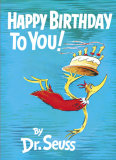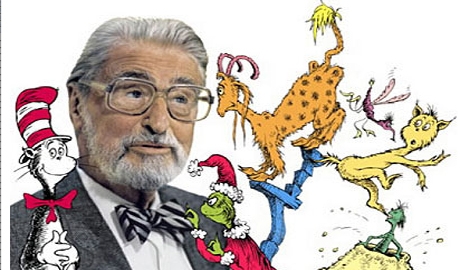 Those of you who frequent our Children’s Room will have seen the above-the-stacks display of Dr. Seuss books, featuring everything from How the Grinch Stole Christmas to The 500 Hats of Bartholomew Cubbins in honor of Theodor Seuss Geisel’s 112th birthday. We here at the Free-For-All have reveled in our love of Dr. Seuss, in the past, so we are thrilled to be celebrating today!
Those of you who frequent our Children’s Room will have seen the above-the-stacks display of Dr. Seuss books, featuring everything from How the Grinch Stole Christmas to The 500 Hats of Bartholomew Cubbins in honor of Theodor Seuss Geisel’s 112th birthday. We here at the Free-For-All have reveled in our love of Dr. Seuss, in the past, so we are thrilled to be celebrating today!
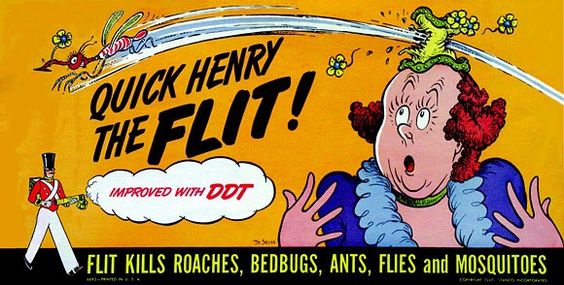
Theodor Geisel remains one of the most celebrated children’s book authors of all time, with several of his books among the top-selling in history, having sold over 600 million copies, and being translated into over 20 languages by the time of his death. It was not his first, or only career choice, however. Geisel studied at the University of Dartmouth and Oxford University, before leaving Oxford in 1927 to become a cartoonist and illustrator for Vanity Fair Life. He supported himself and his first wife, Helen, through the Depression
by drawing ads for companies as diverse as Standard Oil, General Electric, and the Narragansett Brewing Company. Though his first children’s book, And to Think That I Saw It on Mulberry Street, was published in 1937, he spent most of the Second World War making animations for the American Army, including the short film Design for Death, which won the Academy Award for Documentary Film in 1947. He would win another Academy Award when Gerald McBoing-Boing, based on one of his stories, won the 1950 Academy Award for Best Short Film.
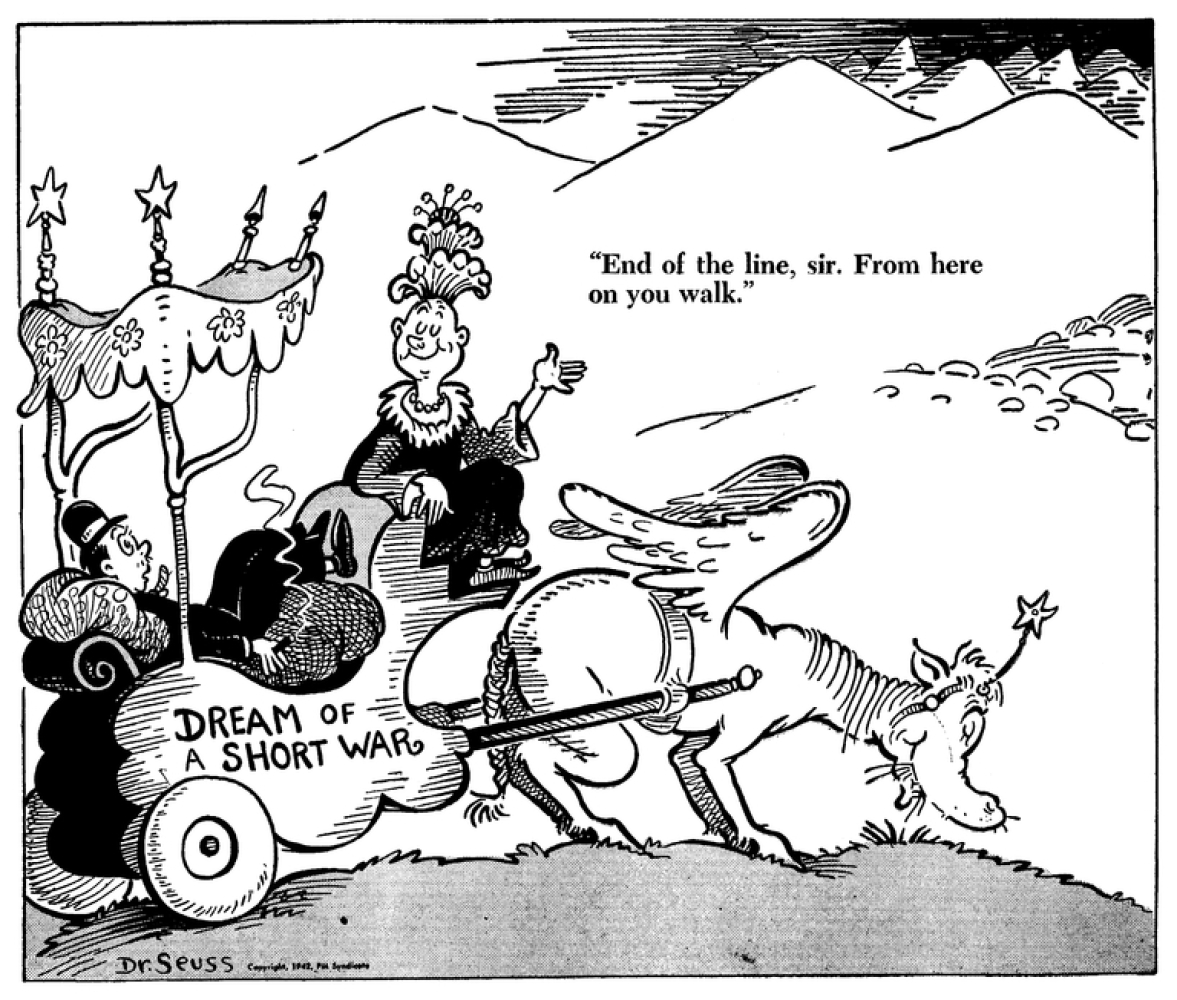
Following the war, and the onset of the Cold War, the education of American children became seen as another tool in world domination–however, the literacy rate among American children, it turned out, was lamentable. In 1954, Life released an article that concluded that children were not reading because the books they were given to read were boring. In an effort to ameliorate the situation, William Ellsworth Spaulding, director of the education division at Houghton Mifflin in Boston, compiled a list of roughly 350 words that he felt were important for first graders to know. Handing the list to Geisel, he asked him to cut it down to 250 words, and write a book that would capture children’s attention, and help them learn to read while being entertained. The result was a book that used 236 of those words, and featured the same vibrant illustrations, rhyming narrative, and fantastical plot elements of Geisel’s earlier work, but was accessible to beginning readers. The title? The Cat in the Hat.
 Geisel went on to write a number of books in this simpler style, while continuing to produce more linguistically challenging books for more advanced readers, providing a canon of works that children could grow up reading–and many did. According to Geisel, “kids can see a moral coming a mile off”, so his works were not based around a single lesson or value, and this gave him the freedom to confront any number of issues in a way that children could appreciate and understand, from the Cold War in The Butter Battle Book, to environmentalism in The Lorax, to beauty standards in Gertrude MacFuzz to racism and bigotry in Horton Hears a Who.
Geisel went on to write a number of books in this simpler style, while continuing to produce more linguistically challenging books for more advanced readers, providing a canon of works that children could grow up reading–and many did. According to Geisel, “kids can see a moral coming a mile off”, so his works were not based around a single lesson or value, and this gave him the freedom to confront any number of issues in a way that children could appreciate and understand, from the Cold War in The Butter Battle Book, to environmentalism in The Lorax, to beauty standards in Gertrude MacFuzz to racism and bigotry in Horton Hears a Who.
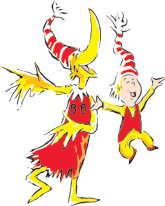 Geisel never won any of the top literary prizes for children (the Caldecott and Newbery Medals), though two of his books, McElligot’s Pool (1947), Bartholomew and the Oobleck (1949) were runners-up for the Caldecott. He was, however, awarded a Laura Ingalls Wilder Medal from the Professional Children’s Librarians in 1980 for his “substantial and lasting contributions to children’s literature”, and a special Pulitzer Prize in 1984 to commemorate nearly a half-century’s work on behalf of children’s literacy. And in 2004, U.S. children’s librarians established the annual Theodor Seuss Geisel Award, which celebrates “the most distinguished American book for beginning readers published in English in the United States during the preceding year”. This award places an emphasis on the “creativity and imagination” that encourages children from Kindergarten to Grade 2 to love reading.
Geisel never won any of the top literary prizes for children (the Caldecott and Newbery Medals), though two of his books, McElligot’s Pool (1947), Bartholomew and the Oobleck (1949) were runners-up for the Caldecott. He was, however, awarded a Laura Ingalls Wilder Medal from the Professional Children’s Librarians in 1980 for his “substantial and lasting contributions to children’s literature”, and a special Pulitzer Prize in 1984 to commemorate nearly a half-century’s work on behalf of children’s literacy. And in 2004, U.S. children’s librarians established the annual Theodor Seuss Geisel Award, which celebrates “the most distinguished American book for beginning readers published in English in the United States during the preceding year”. This award places an emphasis on the “creativity and imagination” that encourages children from Kindergarten to Grade 2 to love reading.
Today, in addition to reading his whimsical, subversive, and still wonderfully entertaining books, you can also visit the Dr. Seuss National Memorial Sculpture Garden in Springfield Massachusetts (Geisel’s hometown), which opened in 2002.

…Oh, and the “Doctor”? Geisel said he added it because his father always wanted him to study medicine. However, the necessity of it came during his time at Dartmouth. Geisel was caught in a student dorm with gin–which, during Prohibition, was a pretty serious issue. He was ordered to give up all extra-curricular activities, including his editor-in-chief position at the college humor magazine, The Jack-O-Lantern. In order to keep submitting to the magazine, Geisel had to adopt a pseudonym…and Dr. Seuss was born. In 1956, Dartmouth awarded him an honorary doctorate, thus making the “Dr.” part official.
So, in honor of Dr. Seuss, and all the joy and wonder he brought–and continues to bring–to so many children, we here at the Free For All say:
If we didn’t have birthdays,
you wouldn’t be you.
If you’d never been born,
well then what would you do?
If you’d never been born,
well then what would you be?
You might be a fish!
Or a toad in a tree!
You might be a doorknob!
Or three baked potatoes!
You might be a bag full of
hard green tomatoes.Or worse than all that…
Why, you might be a WASN’T!
A Wasn’t has no fun at all.
No, he doesn’t.A Wasn’t just isn’t. He just
isn’t present. But you…
You ARE YOU!
And, now isn’t that pleasant!

